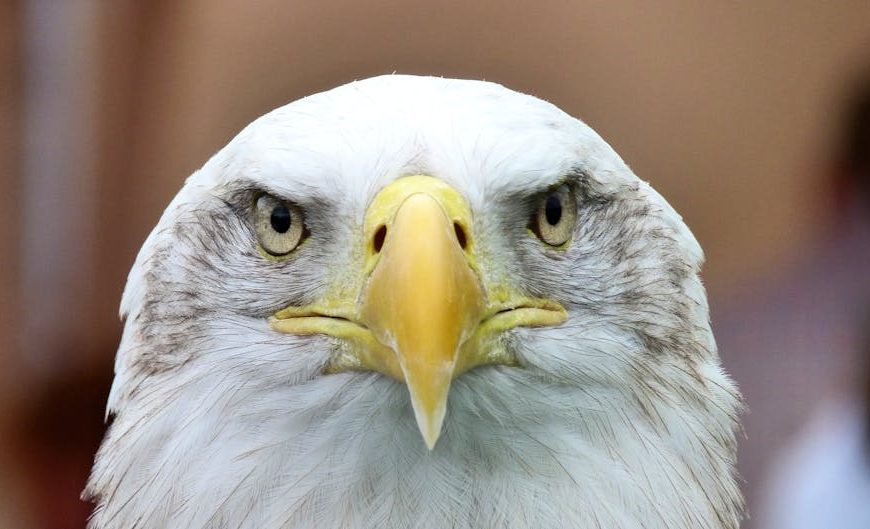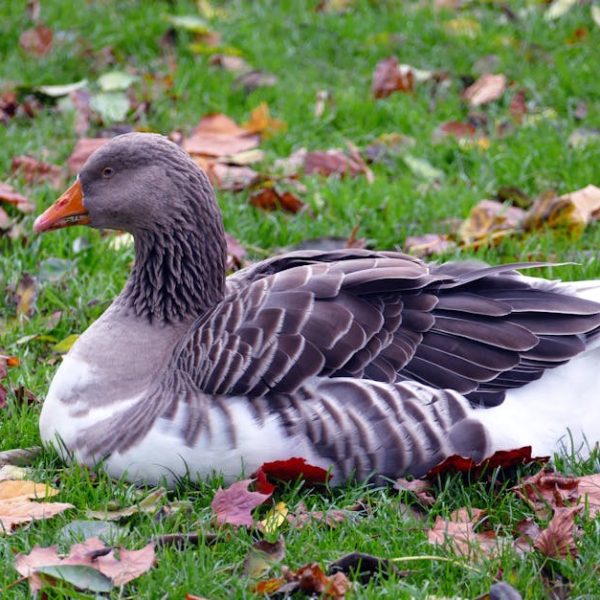Birds are fascinating creatures. The vibrant plumage and enchanting melodies truly give them a sense of mystique, making them a source of endless intrigue. One baffling aspect of their physiology, particularly their auditory system, has intrigued biologists and bird-lovers alike – where exactly are a bird’s ears, and how do they hear? Let’s unravel this mystery together.
The Anatomy of the Bird: Understanding Bird’s Physical Features
While birds might lack the conspicuous outer ears or pinnae that many mammals possess, they do have an incredibly sensitive hearing apparatus hidden beneath their feathers. The exterior of a bird’s ear is a small opening or slit often concealed amidst their plumage, a kind of camouflage providing protection from elements and predators. Let’s delve a bit deeper:
- Bird’s Feathers: A Protective Mechanism: The fascinating feathered companions we all admire for their beauty and resiliency have an incredible protective mechanism. The unique structure of their feathers, while primarily aiding in flight and insulation, also ingeniously conceals the ears. The feathers don’t hinder their hearing but effectively enhance it due to their acoustic properties allowing sound waves to reach the underlying ear openings.
- The Presence of Slight Indentations as Ears: What appears to be nothing more than a slight indentation or a casual feathered groove on a bird’s head are their ears. Yes, that’s right! These small ‘holes’ serve as the entry point for sound, leading to the internal hearing structure comprising the ear canal, eardrum, and cochlea.
Understanding The Bird’s Hearing Mechanism
To understand how birds hear, it’s important to delve into their auditory mechanism. Just like in humans, sound waves enter through the ear openings, travel down into the ear canal, and cause the eardrum to vibrate. This vibration is picked up by tiny bones which transmits the signals to the cochlea, enabling the bird to process the sound. Let’s get into it:
- Comparison: Bird’s Hearing Vs Human Hearing: Both humans and birds rely on the same basic structure for hearing – an outer ear, middle ear, and inner ear. However, bird’s hearing capabilities often exceed those of humans. For instance, they tend to have a wider range of frequency perception. Additionally, some birds are remarkably adept at localizing sounds without the need for an external ear structure like ours.
- The Influence of Size and Shape of Bird’s Ears: The size and shape of a bird’s ear can greatly influence its hearing capabilities. Larger and rounder ears tend to collect more sound waves and can enhance hearing sensitivity. However, nature always seeks harmony between structure and function, and a bird’s ear shape and size can vary greatly across species, reflecting their different needs and habitats.
Coming up next, we look at the importance of hearing in the life of a bird, how noise pollution affects them, and toss up some intriguing facts about this avian sense.
How Birds Use Their Hearing Abilities
Hearing plays a pivotal role in many aspects of a bird’s life like survival, communication, locating food, and even mating rituals. Ready for some interesting insights?
- The Importance of Birds Listening to Their Chirps: Birds have a vast array of chirps and song patterns, which they use for intra-species communication. Their exceptional hearing allows them not just to produce a variety of sounds but to interpret those generated by their brethren. They convey warnings, mating calls, and territorial claims through their unique songs, revealing a rich communicative behaviour.
- Birds and Echolocation: Some bird species like oilbirds and swiftlets can navigate in complete darkness. How? By using their impressive hearing to perceive echoes of their calls bouncing off obstacles, a behavior known as echolocation. While it’s more commonly associated with bats, these birds just show that nature never runs out of surprises!
 Pro Tips: While all birds have a remarkable sense of hearing, some species take it to another level. For instance, the Great Gray Owl can hear a vole moving beneath a foot of snow, and the Northern Saw-whet Owls can hear the high-frequency sounds of scurrying insects.
Pro Tips: While all birds have a remarkable sense of hearing, some species take it to another level. For instance, the Great Gray Owl can hear a vole moving beneath a foot of snow, and the Northern Saw-whet Owls can hear the high-frequency sounds of scurrying insects.
The Impact of Noise Pollution on Bird’s Hearing
In an increasingly urbanized world, it’s important to consider the impact of noise pollution on birds. Their sensitive hearing can be disrupted by the clamor of cities, often leading to stress, disorientation, and a drop in their reproductive success. Let’s delve deeper:
- Common Sources of Noise Pollution: These include traffic noise, loud music, construction activity, and even certain types of electronic devices. Constant exposure to such noise can cause chronic stress in birds and interferes with their acoustic communication.
 Best practices: By being mindful about our sound pollution, we can help birds maintain their harmony with nature. Tips to minimize noise pollution can include maintaining quiet zones in parks and gardens, adopting quieter city planning norms, using less noisy equipment, and creating awareness about the impact of noise on our feathered friends.
Best practices: By being mindful about our sound pollution, we can help birds maintain their harmony with nature. Tips to minimize noise pollution can include maintaining quiet zones in parks and gardens, adopting quieter city planning norms, using less noisy equipment, and creating awareness about the impact of noise on our feathered friends.
Interesting Facts about Birds and Hearing
Every so often, it’s fun to get a bit trivial. Here are some fascinating facts about birds and their hearing:
- The Barn Owl: A Master of Sound: Among avians, the Barn Owl is an apex example of acute hearing. With asymmetrical ears that detect sounds at slightly different times, they can accurately locate prey even in complete darkness.
- Sounds Above Human Frequency: Bird’s Ultrasonic Perception: Some birds, such as the Bonnell’s Warbler and the Grasshopper Sparrow, can hear ultrasonic sounds. It’s a skill that serves as a defense mechanism against predators and aids in preying on insects that emit ultrasonic calls.
- Bird Species With Poor Hearing: Not all birds have excellent hearing. Pigeons, for instance, are known to have comparatively poorer hearing as their ears lack the complexity seen in some other bird species.
There you have it! A detailed exploration into the fascinating world of bird’s hearing. Remember, next time you’re out appreciating the beauty of birds, take a moment to appreciate their incredible auditory capabilities too.
Key Takeaway:
- Birds have a dedicated and sensitive auditory system beneath the feathers with the exterior of a bird’s ear being a small opening or slit often concealed amidst their plumage.
- Bird’s hearing mechanisms are similar to humans’. Sound waves enter through the ear openings, travel down into the ear canal, and cause the eardrum to vibrate, enabling the bird to process the sound.
- Bird’s ear size, shape, and location vary across species based on their habitat and survival needs.
- Hearing plays an essential role in a bird’s life from survival, communication to locating food, and mating rituals.
- Human activity, and in particular noise pollution, can negatively impact bird hearing, disrupt their behaviors, and cause chronic stress.
Birds are undoubtedly a marvel of nature, especially when it comes to their hearing capabilities. By appreciating and understanding their auditory system, we can contribute to their protection by minimizing noise pollution. Remember, our feathered friends not only make our environment lively but also play a critical role in maintaining a well-balanced ecosystem.
FAQs
Q: Are all birds capable of echolocation?
A: No, the ability to echolocate is not found in all birds. Only a few species like oilbirds and swiftlets have been documented to use echolocation to navigate in complete darkness.
Q: What are the effects of noise pollution on birds?
A: Noise pollution can cause chronic stress in birds, disrupt their acoustic communication and natural behaviors. In severe cases, it can also lead to a reduction in their reproductive success.
Q: How does the shape and size of a bird’s ears affect its hearing?
A: The shape and size of a bird’s ears can greatly influence its hearing abilities. Larger and rounder ears tend to collect more sound waves and enhance hearing sensitivity.
Q: Are there birds that can hear frequencies in the ultrasonic range?
A: Yes, some birds, such as the Bonnell’s Warbler and the Grasshopper Sparrow, can hear sounds in the ultrasonic spectrum which serves as a defense mechanism against predators and aids in hunting insects that emit ultrasonic calls.
Q: Can we do anything to protect birds from noise pollution?
A: Yes, through mindful actions like maintaining quiet zones in parks and gardens, adopting quieter city planning norms, using less noisy equipment and raising awareness about the harm caused by noise pollution.
If you found this article helpful, consider sharing it with others and discover more enlightening posts on our website.












